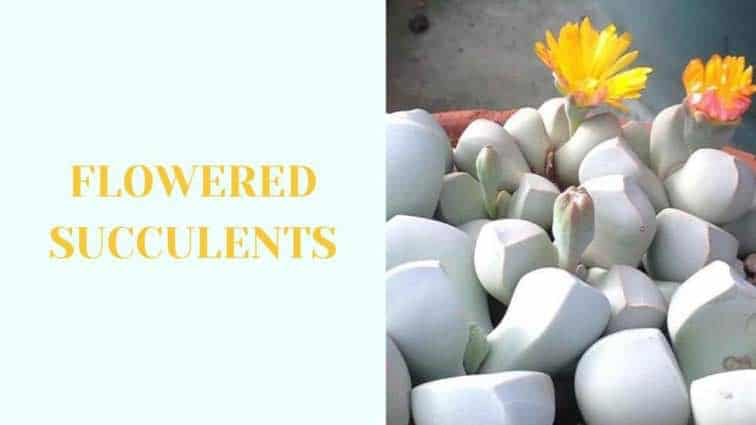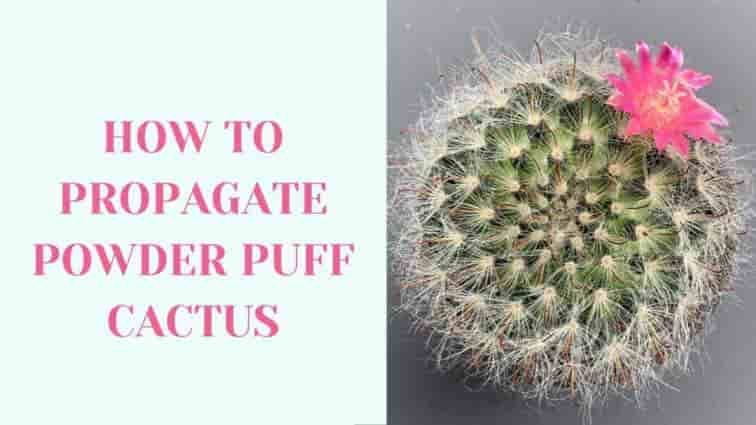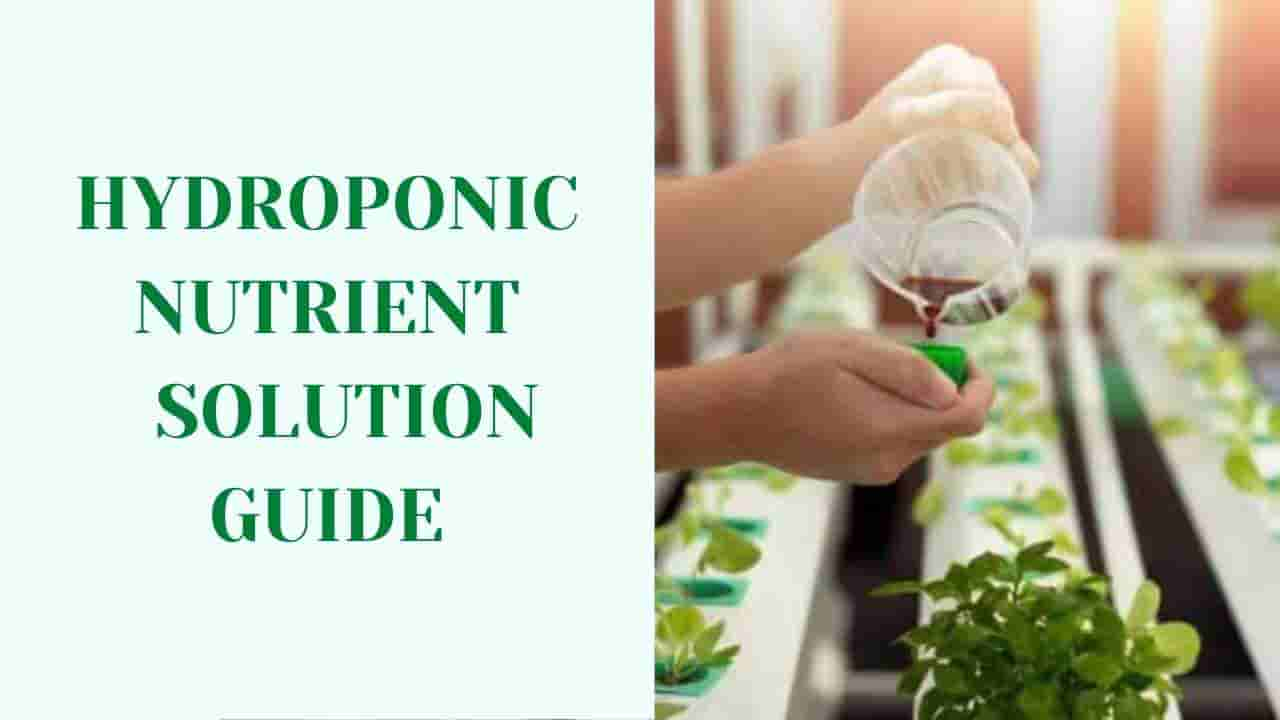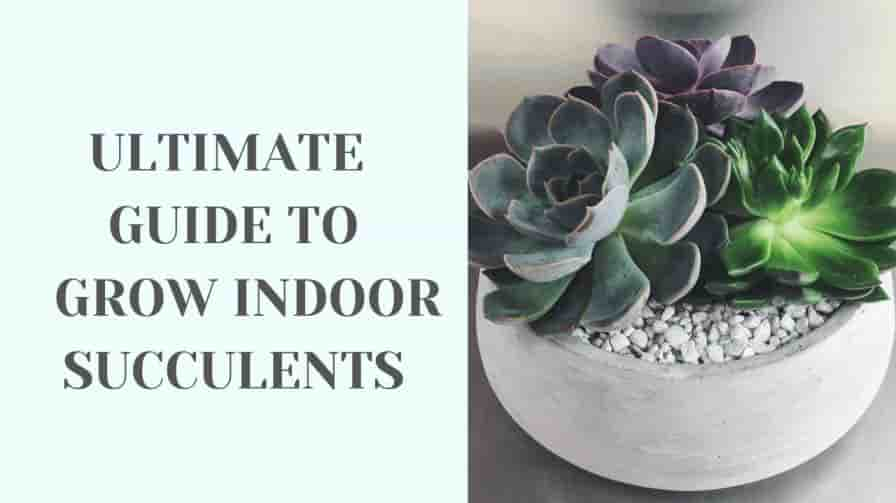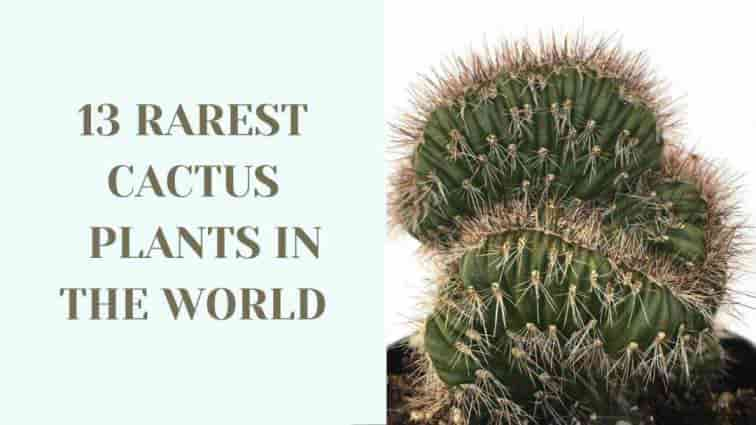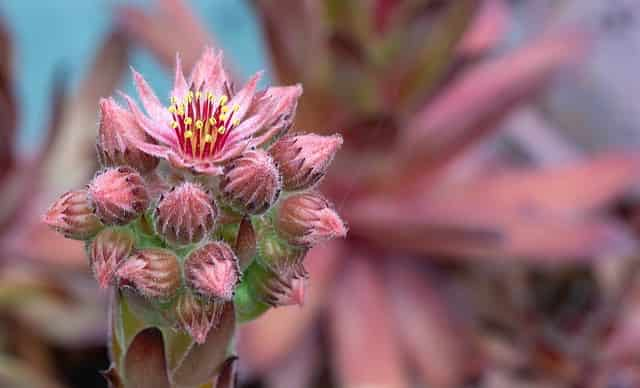
Picture via Pixabay
Succulents have captivated the hearts of gardeners and home decorators alike, becoming a popular staple in households and offices around the world. These resilient plants are cherished not only for their striking appearance but also for their remarkable ability to thrive with minimal care. Originating from arid regions, succulents are equipped to store water in their fleshy leaves, stems, or roots, which allows them to withstand long periods of drought. This unique adaptation makes them an excellent choice for both novice plant enthusiasts and experienced green thumbs looking for low-maintenance greenery.
Their popularity has soared in recent years, thanks to their versatility in various decorative settings, from rustic terrariums to modern minimalist pots. Moreover, their wide range of shapes, sizes, and colors can enhance any living space or garden. Whether it’s the rosette forms of Echeverias, the towering presence of an Aloe, or the trailing chains of Sedums, there’s a succulent to match every aesthetic preference. As people continue to seek sustainable and stylish solutions for home décor, succulents stand out as a natural choice, offering a perfect blend of beauty and resilience.
Proper watering techniques are crucial to the health and longevity of succulents, making the difference between a thriving plant and one that struggles to survive. Despite their reputation for being drought-tolerant, succulents need specific watering practices to truly flourish. Incorrect watering is the most common cause of succulent mortality, highlighting the need for a tailored approach to hydration that respects their unique environmental adaptations.
This comprehensive guide will walk you through the essential techniques and strategies for watering succulents effectively. We’ll explore the soak-and-dry method, which mimics the natural precipitation patterns of arid habitats and promotes healthy root growth. You’ll also learn about the importance of choosing the right tools, including pots with adequate drainage and specialized soil mixes that help manage moisture levels effectively.
We’ll cover seasonal variations in watering needs, helping you adjust your approach as temperatures and daylight hours change throughout the year. Additionally, the guide will address common watering mistakes to avoid, offering practical tips to identify and correct these errors. By the end of this article, you’ll be equipped with the knowledge to water your succulents in a way that ensures their health and enhances their beauty, turning you into a confident and successful succulent gardener.
The Unique Biology of Succulents
Succulents are fascinating plants that have adapted uniquely to thrive in arid environments where water is scarce. Their ability to store water in various parts of their structure is not just a survival mechanism but a complex adaptation that allows them to flourish under environmental stress.
Water Storage in Succulents
Succulents store water primarily in their leaves, stems, or roots, depending on the species. This storage capability is facilitated by specialized cells in their tissues that are larger and more elastic than those in other plants. These cells expand to accommodate water when it’s abundant, and gradually release it during drought. The thick, fleshy leaves of many succulents are not just for show; they are water reservoirs, full of gel-like tissue that retains moisture effectively. This attribute is why succulents often feel rubbery or squishy to the touch.
Adaptation to Arid Environments
The adaptability of succulents to dry conditions goes beyond mere water storage. Their entire biology is designed to minimize water loss. For instance, instead of the wide leaves found on many plants, which increase the surface area for transpiration (water loss), succulents have compact, thick leaves with a reduced surface area. Many succulents also feature a waxy, shiny coating on their leaves called a cuticle, which further reduces water evaporation.
Moreover, succulents engage in a type of photosynthesis known as CAM (Crassulacean Acid Metabolism), which is highly efficient in water usage. Unlike most plants, which open their stomata (tiny pores in the leaves) during the day to absorb carbon dioxide, succulents open their stomata at night to minimize water loss. This adaptation allows them to avoid the hotter daytime temperatures, reducing the risk of water evaporation when it’s most intense.
These biological traits make succulents extraordinarily well-suited to environments that would challenge other plant types. Their ability to not only survive but also to thrive in dry, hot climates makes them an excellent choice for gardeners in drought-prone areas and those seeking low-maintenance plants for their landscapes.
By understanding the unique biology and water storage mechanisms of succulents, gardeners can better appreciate these plants and provide them with the care they need to prosper. This insight into their adaptation strategies also helps in cultivating them in a way that mimics their natural habitat, ensuring their health and vitality in both indoor and outdoor settings.
Signs of Water Stress in Succulents
Succulents are generally robust plants that can endure less-than-ideal watering conditions for a while. However, consistent overwatering or underwatering can lead to health issues that may compromise their growth and aesthetic appeal. Recognizing the signs of water stress in these plants is crucial for maintaining their health and beauty.
Signs of Overwatering in Succulents
Overwatering is one of the most common mistakes succulent owners make. It can be more detrimental than underwatering, as it leads to root rot, a condition that is often irreversible. Here are the signs that your succulent might be receiving too much water:
- Soft, Mushy Leaves: Unlike the firm, plump leaves of a healthy succulent, overwatered plants have leaves that are soft and squishy to the touch.
- Discoloration: Overwatered succulents often display leaves that are turning yellow or black, which is a sign of decay at the cellular level.
- Leaf Drop: An excess of water can cause leaves to fall off with minimal touch or spontaneously.
- Transparent Leaves: Leaves may become translucent and puffy as cells are engorged with water to the point of bursting.
- Visual Tip: Include close-up images of overwatered succulents showing these symptoms for easy identification.
-
Signs of Under-watering in Succulents
-
Underwatering, while less immediately catastrophic than overwatering, can stunt growth and cause the plant to weaken over time. Here are the indicators of underwater stress:
- Shrivelled Leaves: Succulents draw on the water stored in their leaves during drought, leading to a noticeable shrinkage and wrinkling of the leaves.
- Dry, Brittle Leaves: If the water deficiency continues, the leaves will dry out and become crispy to the touch, eventually leading to the plant’s demise if not corrected.
- Slow Growth or No Growth: While succulents are slow growers, a lack of new growth over a long period can also indicate insufficient watering.
- Dull, Lackluster Appearance: Underwatered plants lose their vibrancy and can appear dull and flattened, lacking the glossy, plump appearance of well-hydrated succulents.
By being aware of these signs, succulent enthusiasts can quickly adjust their watering practices to prevent serious damage and help their plants thrive. Regular monitoring and adjusting to the plant’s needs based on visual cues and soil moisture levels are key to successful succulent care.
The Soak and Dry Method
The Soak and Dry method is a highly recommended watering technique for succulents, tailored to their unique water storage capabilities and adaptation to dry climates. This method ensures that succulents receive enough water to thrive without risking overhydration and root rot. Here’s a step-by-step guide to effectively implementing the Soak and Dry method, along with an explanation of why thorough watering is crucial.
Step-by-Step Guide to the Soak and Dry Method
-
Check the Soil: Before you water, make sure the top inch of the soil is completely dry. Use your finger or a soil moisture meter to check. This is crucial because succulents prefer to fully dry out between waterings.
-
Water Thoroughly: When it’s time to water, do so thoroughly. Pour water slowly onto the soil until it begins to run out of the drainage holes at the bottom of the pot. This ensures that the water reaches the entire root system, encouraging deep root growth and healthy hydration levels.
-
Let it Drain: Allow the pot to sit and drain any excess water. Succulents should never sit in water as stagnant water can lead to root rot. Ensure your potting container has adequate drainage.
-
Dry Out Period: After watering, do not water again until the soil has dried out completely from the top down to just above the bottom of the pot. This drying out period mimics the natural arid conditions most succulents are adapted to.
-
Repeat: Maintain this cycle of deep watering followed by a complete dry-out phase. The frequency of this cycle will depend on factors like the current climate, the season, and the specific type of succulent.
Importance of Thorough Watering
Thorough watering, as opposed to frequent light sprinklings, is vital for a few reasons:
- Encourages Root Growth: Deep watering promotes the growth of deep roots, which help succulents access water from deeper within the soil. This is especially beneficial during dry spells.
- Prevents Root Rot: By allowing the soil to completely dry between waterings, you reduce the risk of fungal infections and root rot, which are common issues caused by moisture-laden environments.
- Mimics Natural Habitat: Many succulents are native to environments that experience heavy rainfalls followed by long periods of drought. Thorough watering followed by a drying period mimics these conditions, keeping your succulents healthy and stress-free.
By following the Soak and Dry method, you ensure that your succulents are watered in a way that supports their health and mimics their natural environmental conditions. This method is straightforward but effective and is key to cultivating vibrant and resilient succulents.
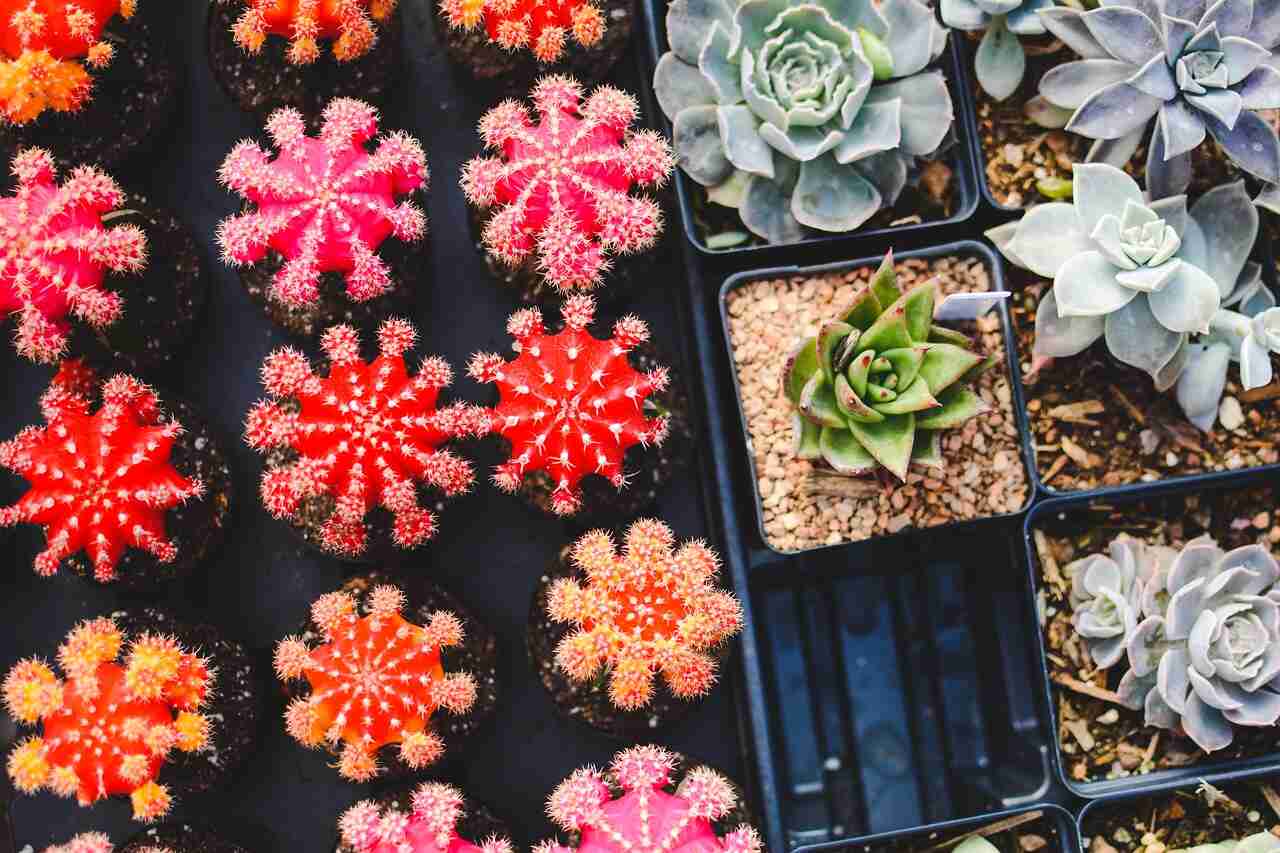
Picture via Pixabay
Common Mistakes With Succulents
#1 – Buying a pot without a drainage hole for your succulents
Firstly succulent plants can thrive in pots without drainage holes, it will require you to take that much more care of them. Steeling your valuable time that could be spent doing something else.
So your first step should be buying a pot that has a good drainage hole. That means going to your local gardening shop and look at the pottery options, select one with a larger drainage hole. It is the best choice for any succulent plants, If you need further help, find out what pots with drainage hole we recommend here. Taking it a step further, often succulent plants can be used for decoration in the home as well, why not select a beautiful hand made a pot with a good drainage hole.
#2 – Using The Wrong Succulent Soil
Buying and using the right soil will hugely affect your success of watering your succulent plant. To learn more about what soil to select that won’t poorly affect your plants. Have a look at our post here. I would recommend that you find the best formula, one that has high natural values to aid in the development of your plant. Some soil is better for indoor plants, and other soil is better for outdoor plants. As we mentioned above, succulents don’t like sitting in wet soil for too long. Additionally having a pot that drains the soil most effectively will aid in this process. Having the right soil will make sure the plants aren’t too wet for too long.
#3 – Watering Your Succulent Plants With A Water Bottle
Succulents much rather prefer to be wholly soaked not dazzled with water. So many people talk about how the water their plants with the spray bottle at home. I can’t emphasize it enough how sad that makes me, it means your plants are struggling and not growing to their full potential.
Seasonal Watering Variations
Succulents’ watering needs can vary significantly with the changing seasons. Understanding how to adjust your watering schedule according to the time of year is crucial for maintaining the health of your succulents. Below are guidelines on how to modify your watering practices for hot summers and cold winters, ensuring that your plants receive optimal care regardless of the climate.
Adjusting Watering Schedules Based on Seasons
-
Spring and Summer (Growing Season):
- Increase Watering Frequency: As temperatures rise and daylight hours increase, succulents often enter a period of active growth. During this time, their water needs will increase. Monitor the soil more frequently and water whenever it has dried out completely.
- Morning Watering: Try to water in the early morning. This allows the water to soak deeply into the soil, reaching the roots without too much excess water evaporating due to the midday heat.
-
Fall and Winter (Dormant Season):
- Reduce Watering: Many succulents enter a dormant period during the cooler months when their water requirements decrease. During this time, extend the intervals between watering, and allow the soil to stay dry for longer periods.
- Avoid Water Accumulation: Ensure that your succulents are not exposed to freezing temperatures or waterlogged conditions. Water sparingly, and only when you are sure the soil is dry and the plants show signs of needing hydration.
Tips for Watering During Hot Summers
- Early Morning Watering: Watering in the early morning prevents rapid evaporation and gives the succulents ample time to absorb the water throughout the day.
- Check Soil Moisture Regularly: Summer heat can dry out the soil quickly. Regular checks will help prevent dehydration.
- Provide Some Shade: During peak summer, consider providing partial shade to prevent overheating and excessive water loss, especially for young or particularly delicate succulents.
Tips for Watering During Cold Winters
- Less Frequent Watering: Water less frequently in winter, as the water usage of succulents slows down. Overwatering during this time can lead to cold damp soil, which can cause root rot.
- Water Only on Warm Days: If possible, choose warmer days to water your succulents to reduce the risk of frost damage.
- Ensure Good Drainage: With the potential for less evaporation, ensuring that your pots have good drainage is crucial to avoid water sitting at the roots.
By tailoring your watering schedule to the needs of your succulents throughout the year, you can help promote their health and vigor, regardless of the season. This approach not only keeps your plants thriving but also mimics the natural conditions they would experience in their native habitats, providing a cycle of wet and dry that succulents are well adapted to handle.
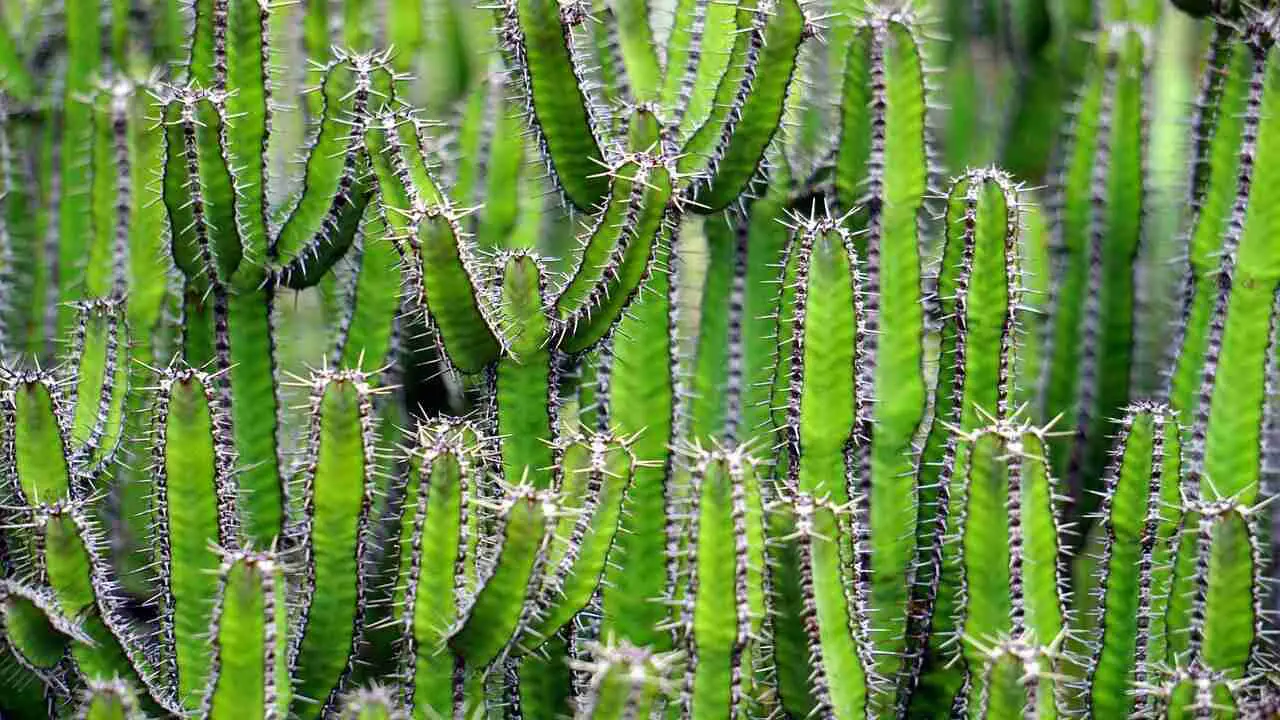
Picture via Pixabay
Choosing the Right Tools for Watering Succulents
Selecting the appropriate tools for watering can significantly enhance the health and longevity of your succulents. From the type of watering can to the choice of pots, each element plays a crucial role in ensuring your succulents receive the care they need.
Types of Watering Cans and Their Benefits
- Long Spout Watering Cans: These cans allow for precise watering, directing the water straight to the soil without splashing the leaves. This is particularly beneficial for succulents, as wet leaves can lead to fungal infections or sunburn.
- Watering Bottles with Narrow Nozzles: Similar to long spout watering cans, these bottles offer control and precision, making them ideal for small or delicate succulents and for watering in tight spaces.
- Adjustable Flow Watering Cans: Some modern watering cans come with adjustable flow settings which can be very useful for customizing the water output depending on the size and needs of your succulent collection.
Each type of watering can has its benefits, but the key is to choose one that allows you to control the water flow to avoid overwatering and ensure that the water reaches the soil, not the foliage.
Importance of Pots with Drainage Holes
- Prevents Waterlogging: Pots with drainage holes are essential as they allow excess water to escape, preventing issues associated with overwatering such as root rot.
- Encourages Healthy Root Growth: By allowing water to drain freely, these pots also encourage the roots to grow healthier by seeking moisture deeper in the soil, which helps the plants become more resilient and drought-tolerant.
- Regulates Soil Moisture: These pots help maintain the correct moisture levels in the soil, critical for the soak and dry method that is recommended for succulents.
Choosing the right pot is as crucial as selecting the right soil, as both contribute to the effective drainage and overall health of your succulents.
Are your succulents dying? Do you need urgent help to keep them alive? Don’t worry! This ebook will solve the problems. I shared all my secrets related to how to water succulents with you.
The Best Soil for Succulents
Characteristics of a Good Succulent Soil Mix
A good succulent soil mix needs to have the following characteristics:
- Well-Draining: The mix should primarily consist of materials that allow water to drain quickly. Succulents are prone to root rot if the soil stays wet for too long.
- Aerated Texture: The soil should be loose and not compact, allowing air to reach the roots which is vital for the health of the root system.
- Low Organic Content: Unlike other plants, succulents do not require a soil rich in organic material. Too much organic material can retain moisture and cause issues.
DIY Succulent Soil Recipes
Creating your own succulent soil can be a cost-effective and rewarding way to ensure your plants have the perfect growing medium. Here’s a simple recipe:
- Standard Succulent Soil Mix:
- 3 parts potting soil (preferably soil formulated for cacti and succulents)
- 2 parts coarse sand (like builders’ sand)
- 1 part perlite or pumice
This mix ensures excellent drainage and mimics the natural growing environments of succulents. Adjust the components based on the humidity of your environment; increase the amount of inorganic material in more humid climates.
By equipping yourself with the right tools and providing the appropriate soil mix, you can create an ideal environment that promotes the health and growth of your succulents. This approach not only simplifies maintenance but also enhances the beauty and longevity of your plant collection.
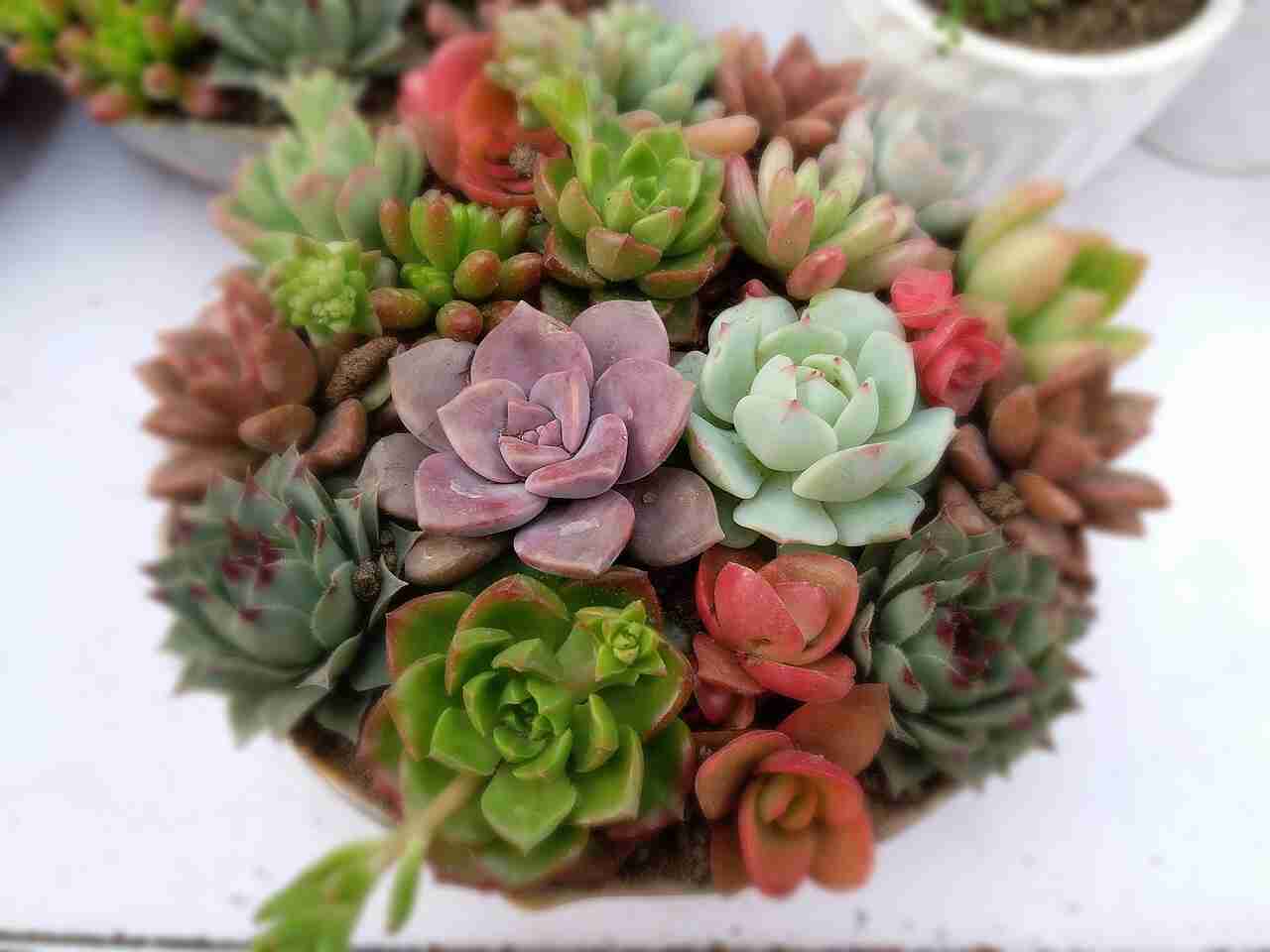
Picture via Pixabay
Learn How to Water Succulents Indoors
Indoor succulent plants want to be watered until the soil is entirely soaked before you water the plant again, let it dry completely. This method is the method of Soaking the succulent plant thoroughly and drying it out. If you water your succulents this way, be sure that you water your succulents thoroughly. Let your succulent stay soaked until the plant has naturally absorbed all the water and becomes dry.
Once your soil is soaked, the plant will soak up all the water it can from the soil. At this point, all you should do is wait for the soil to dry out entirely. I mean from top to bottom of the pot it sits in, you can feel if the soil is trying from the bottom through the drainage hole.
Let know sufficiently watered succulent plant let it dry up and stay that way for the next several days. This tip matters more if your plant is fully grown with more extensive roots. During the drought, your succulents plants will be developing new roots, making the plant roots thicker and healthier.
If you let the plants go through the drought, they will absorb much more water when you water your succulent plants next. The easiest way to achieve a thoroughly soaked plant is by using your homemade watering bottle. If you don’t want to use any tools, such as watering cans using your homes, water faucet could also help. Remember that you should not use the spray bottle that you find around your house. Spraying the plant lightly won’t help the plant grow strong and healthy roots.
Rather than growing new, healthy roots when watered, a poorly watered succulent plant would grow week roots. When the plant is watered correctly, their new roots will absorb water instantly, waiting to be watered again. Watering your succulent plant every few days, the plant will grow healthy and active. If you don’t think it is correct, try it both ways and see the difference for yourself, usually within a week.
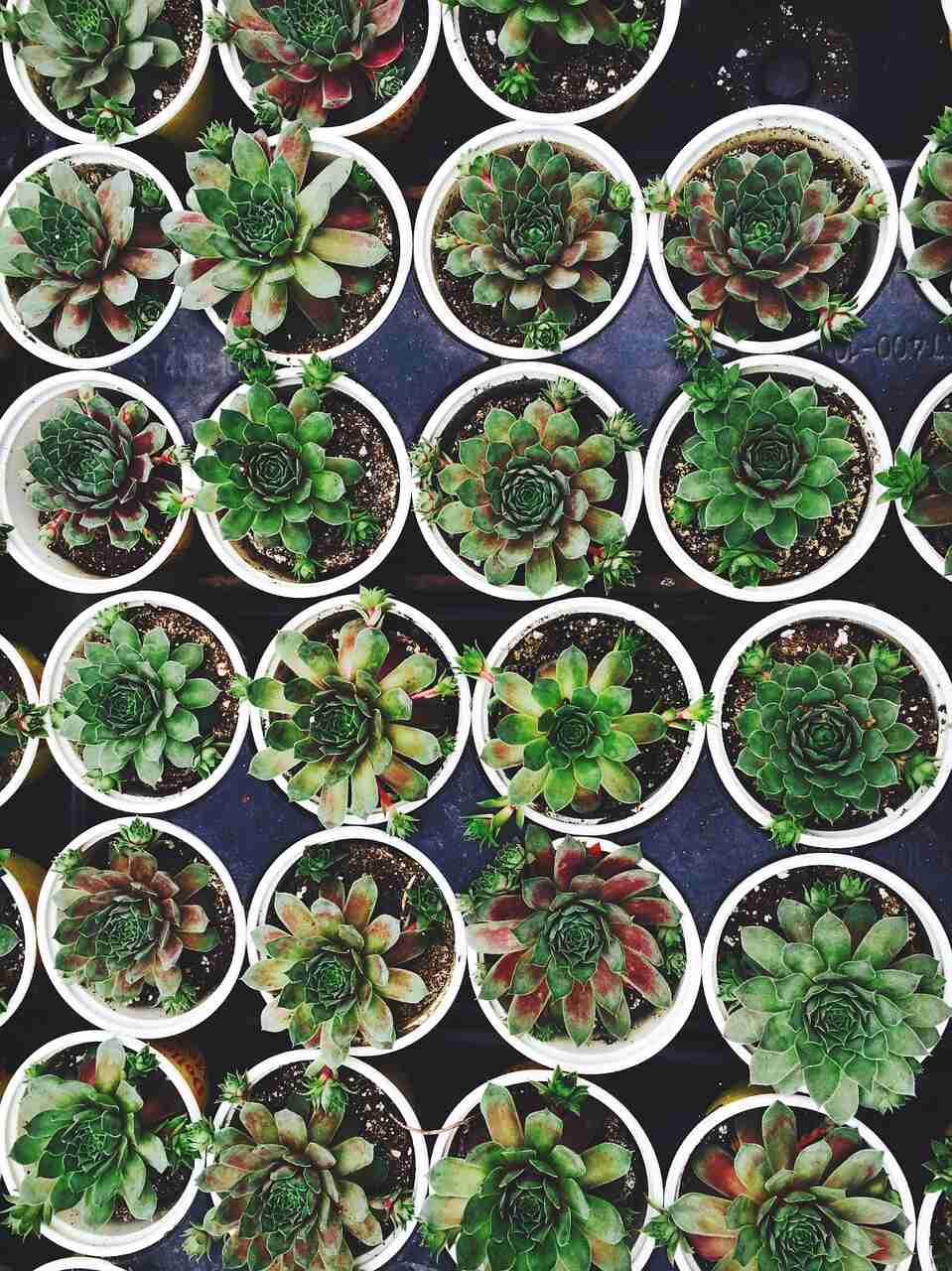
Picture via Pixabay
Hydroponic Solutions for Succulents
Hydroponics, the method of growing plants without soil, using mineral nutrient solutions in an aqueous solvent, has increasingly become a popular technique among gardening enthusiasts, including those who cultivate succulents. This innovative approach can offer a new dimension to growing these resilient plants, providing several benefits while also presenting unique challenges.
Introduction to Hydroponic Succulent Growing
Growing succulents hydroponically involves suspending their roots in a nutrient-rich solution, which provides all the necessary nutrients directly to the roots without the need for soil. This method allows for precise control over the nutrients and water the plant receives. For succulent enthusiasts looking to explore this technique, understanding the specific needs of succulents in hydroponic environments is crucial, as their natural adaptation to dry conditions presents unique considerations.
Advantages of Hydroponic Growing for Succulents
- Enhanced Growth and Health: Hydroponics allows for tight control over the nutrient balance, which can lead to healthier plants that grow faster and stronger compared to their soil-grown counterparts.
- Reduced Water Usage: This method can be particularly water-efficient. Since the system recirculates water, it uses much less water than traditional gardening, aligning with the ecological needs of succulents.
- Pest and Disease Reduction: Growing succulents hydroponically reduces the risk of soil-borne pests and diseases, which is a common problem in traditional succulent gardening.
Considerations When Growing Succulents Hydroponically
- Moisture Control: It’s essential to monitor and control the moisture levels carefully. Succulents are prone to rot in overly moist conditions, so the hydroponic system must be set up to allow periods of drying, similar to the natural soak and dry method used in soil.
- Nutrient Solution: The choice of nutrient solution is critical. It should be balanced specifically for succulents, taking into account their minimal need for some nutrients that other plants might require in larger amounts.
- System Setup and Maintenance: The initial setup of a hydroponic system can be more complex and costlier than traditional planting. Regular maintenance of the system is also crucial to prevent issues such as algae growth or system blockages.
Incorporating hydroponics into your succulent gardening can revolutionize how you manage plant care, offering a clean, controlled, and scientifically fascinating method of cultivation. While it presents a learning curve, the benefits of hydroponic gardening can make it a rewarding endeavor for those looking to optimize their plant care practices and explore advanced gardening technologies.
How To Water Your Outdoor Succulent Plants?
When taking care of your outdoor succulent plant, I advise you to pick the right soil for soaking. Remember always to let the succulent plant dry up completely before watering the plant again. It is the same as with indoor plants. Finding out how much water your outdoor plants need as we continue.
Dealing with outdoor succulents plants, it is vital to think about the temperature. The warmer the air is, the more you need to water the soil, it means watering the plant every other day or more. Living in a cold city with high humid means watering your plant less. Usually, every three days when it is warm during the summer season, but water your succulents less during the winter months.
It goes without saying that the air flows better outside than inside, it means that the water evaporates faster. That means you might need to water your outdoor succulent plants more often than your indoor succulents.
If you are unsure of what to do with your outdoor succulent plant, bring it inside during the winter months. Bringing your plants inside is especially critical if the temperature where you live hits freezing limits. A good time to relocate your plant is when you start feeling colder, that is when the plant should be moved inside. A week or two before or after won’t hurt but pay attention to the temperature if you want the plant to grow strong.
Both plants in pots and plants outdoor need the same amount of water, that means watering the plant regularly. Outside the soil is colder, it drys slower, so be careful to not
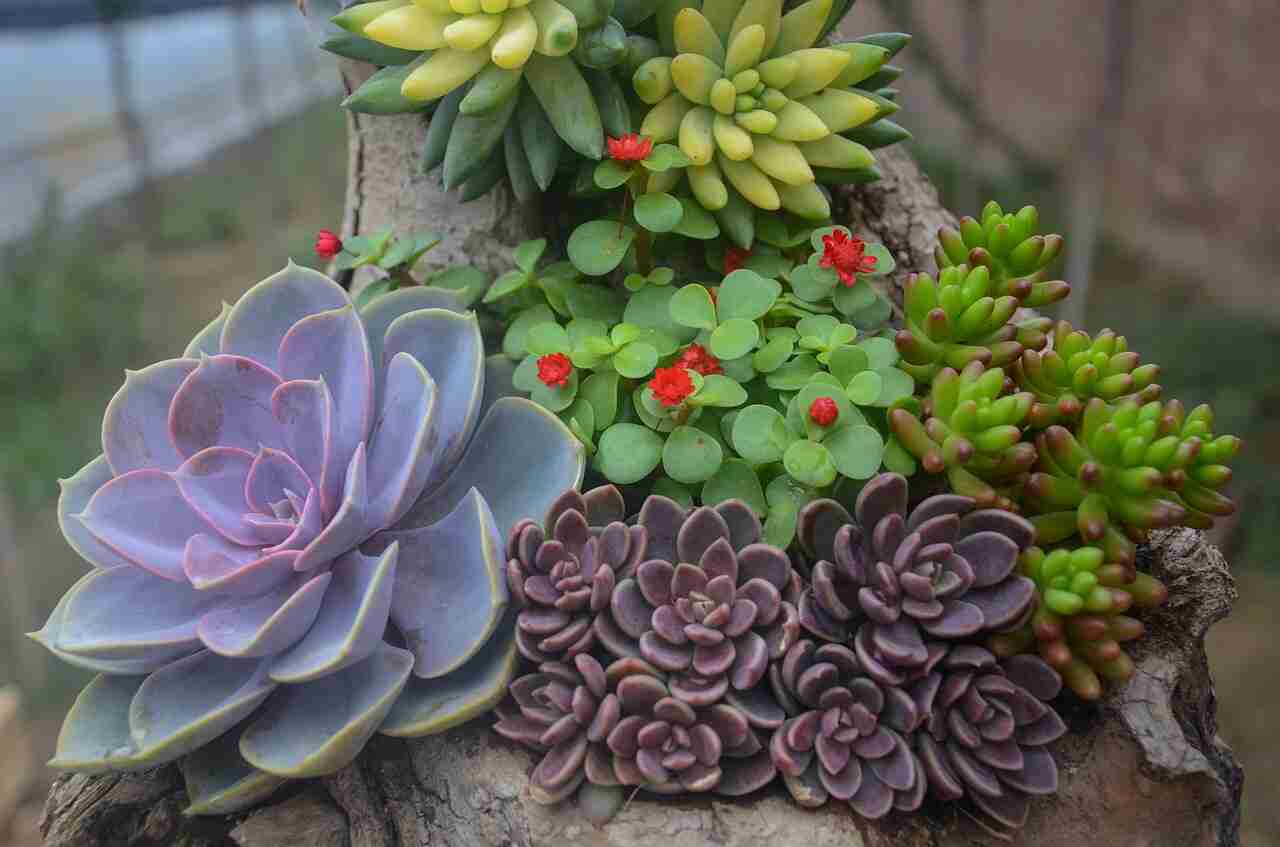
Picture via Pixabay
How to water succulent seedlings?
The only time that you are allowed to use your spray bottle for watering. Time to use the spray bottle is when you’re growing the seedlings to make more for your friends and family. If you want to have success in propagating your succulent leaves indoor, then you need to be committed to watering the plant every single day.
It means spraying the top part of the soil with your handy spray bottle. Alternatively, use the home crafted bottle that we spoke about before. Leaves of larger succulent plants absorb water in the air that surrounds them, so spraying the plant is acceptable.
If you bought the correct pot and the most nutritional well draining succulent soil for then you can water a bit more. That means you could water the plant a bit more than if you were using a pot without any drainage hole. Pots without the drainage holes dry slower, that is one of the reasons why you should not use them. Pay attention to your succulent plant’s root, if they are drying up fast, that means the plant is not being watered enough.
When you examine your succulent roots, healthy roots look white, pink and a bit shiny. When the plant grows, it will get more roots, so you might need to cut back on how much you water the plant regularly. Although, before you cut, back on the water, you provide the plants with, let them grow into the size of your thumbnail.
How Often Should Succulents Be Watered – Pro Tips
Now if you want to learn about each succulent for itself then we recommend that you either look at your “Succulent Type” part and located your succulent there or visit our Youtube page and watch a video about your spesific plant as we go on. There we will take you through each step as we continue that explaines the indivitual plants watering need so that there will be no confusion.
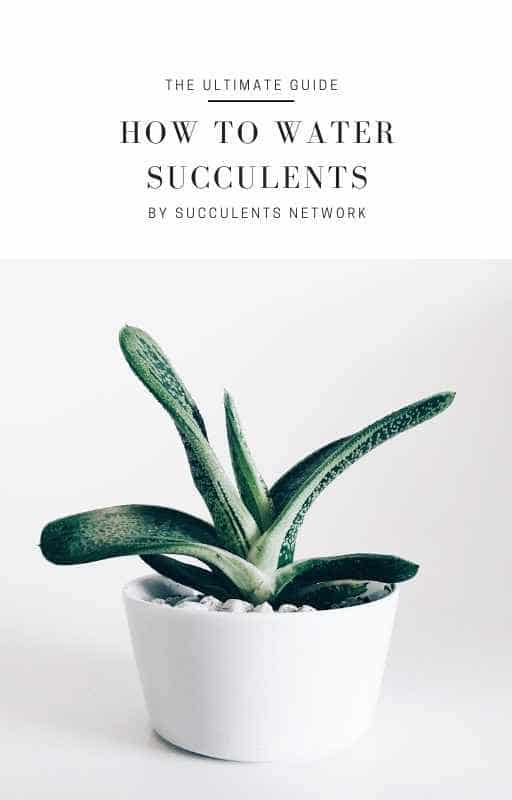
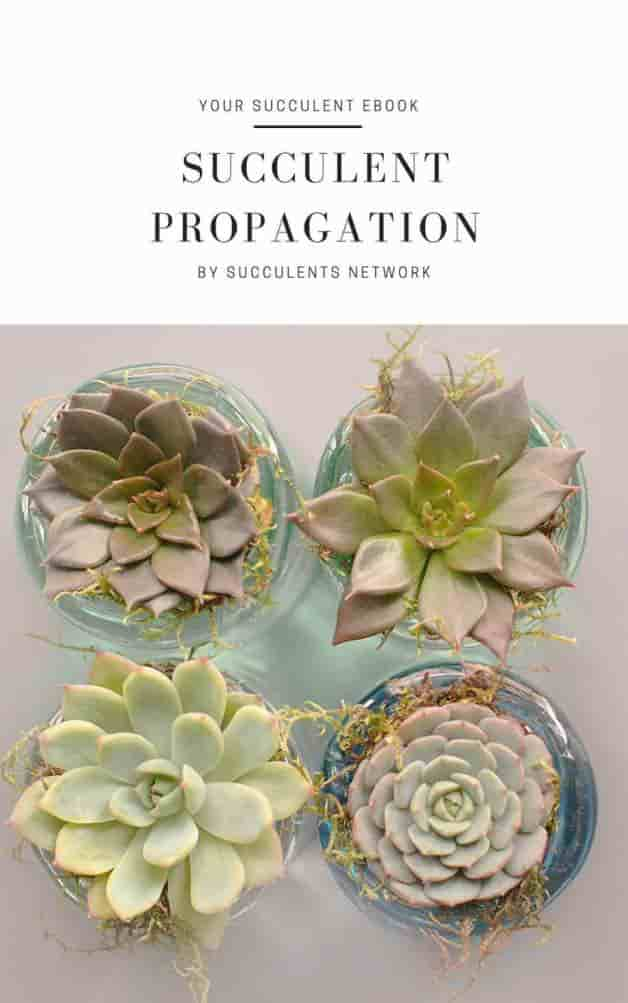
FAQ – All About Watering Succulents
In this section, we answer some of the most frequently asked questions about watering succulents. These answers will help demystify some common queries and ensure your succulents get the care they need to thrive.
1. How often should I water my succulents?
Answer: The frequency of watering succulents depends on the climate, the environment (indoors or outdoors), and the season. As a general rule, water when the top inch of the soil feels dry. This could mean watering once a week during the active growing season in spring and summer, and reducing to once every other week or less during the dormant winter period.
2. Can I water my succulents with tap water?
Answer: Yes, you can generally water succulents with tap water. However, if your water is hard or contains high levels of dissolved minerals, it’s advisable to use filtered or distilled water to prevent mineral buildup in the soil that could affect your plant’s health.
3. What is the best time of day to water succulents?
Answer: The best time to water succulents is in the morning. This allows the water to reach deep into the roots and provides enough time for the excess water to evaporate before the cooler evening temperatures, reducing the risk of fungal diseases.
4. Should I adjust my watering routine in the winter?
Answer: Yes, succulents generally require less water in the winter because their growth slows down. Continue to monitor the soil and only water when it has dried out completely. Overwatering during this dormant period can lead to root rot.
5. How can I tell if I’m overwatering my succulents?
Answer: Signs of overwatering include yellowing leaves, soft and mushy leaf texture, and leaves falling off with little to no effort. If you notice these symptoms, cut back on your watering schedule and check if your pot has adequate drainage.
6. What should I do if my succulent’s leaves are shriveling?
Answer: Shriveling leaves can be a sign of underwatering. If the leaves are dry and crispy, increase your watering frequency slightly. Remember, it’s better to soak the soil thoroughly when you water and then allow it to dry out completely before watering again.
Watering succulents doesn’t have to be complicated. By understanding the basic needs of these resilient plants, you can master their care with ease. Remember that each succulent is unique, and their needs can vary slightly depending on their environment and the specific species. Monitoring your plants regularly and adjusting your watering technique based on their response will ensure that your succulents remain healthy and vibrant. With the tips and answers provided in this FAQ, you’re well on your way to becoming a proficient succulent gardener. Happy gardening!

